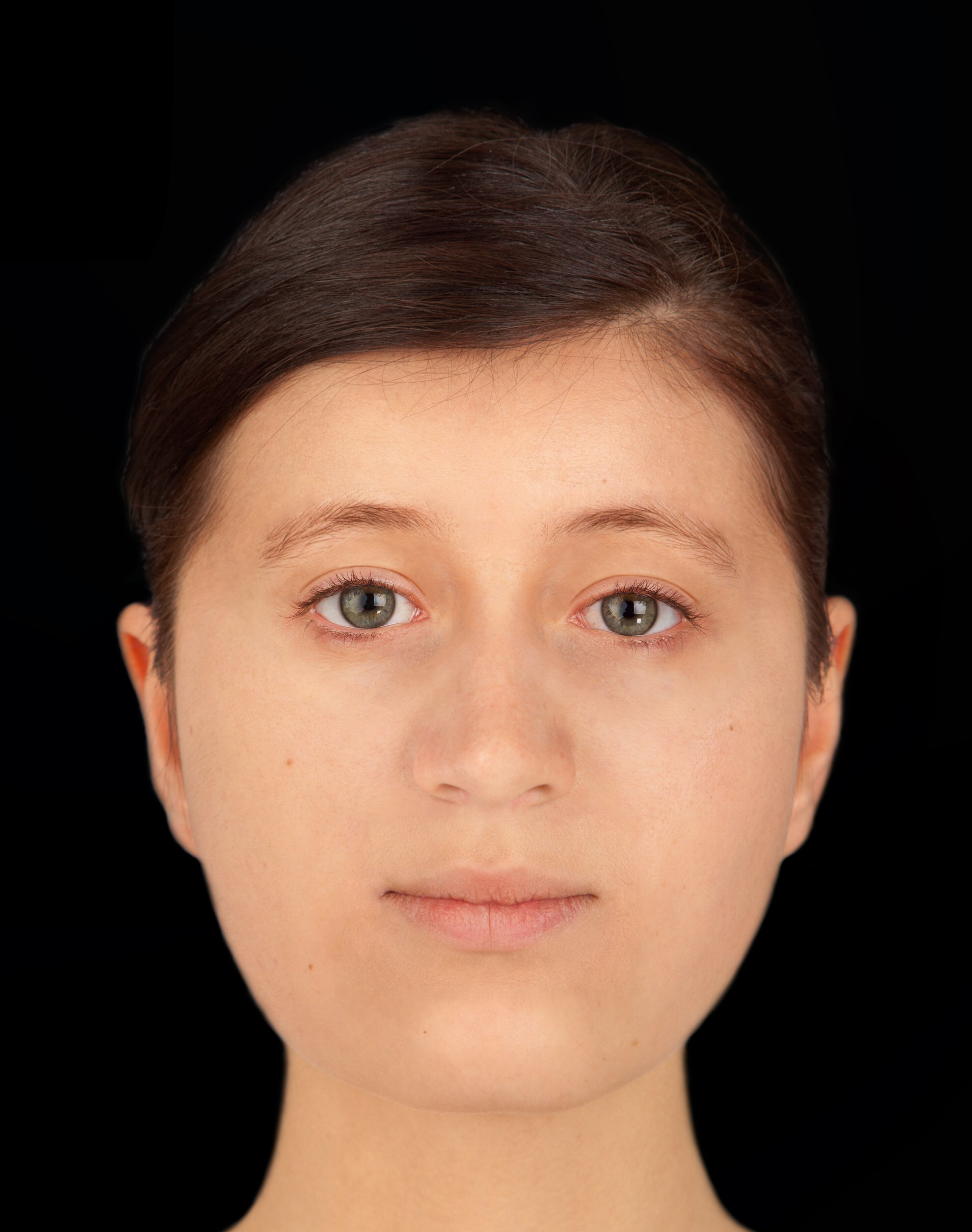Trumpington Cross burial facial reconstruction, created by forensic artist Hew Morrison, showcases the stunning image of a 16-year-old woman who was buried near Cambridge, UK in the 7th century. This young woman was found with a rare gold and garnet cross, now known as the “Trumpington Cross,” which adds to the intrigue surrounding her identity and origins. Through the analysis of her skull, it has been revealed that she moved to England from Central Europe as a young girl, resulting in a fascinating shift in her diet. The reconstructed image of this woman, along with the artifacts from her burial, including the renowned Trumpington Cross, will be unveiled in a highly anticipated exhibition at the Museum of Archaeology and Anthropology in Cambridge.
Forensic artist Hew Morrison meticulously used measurements of the woman’s skull and tissue depth data for Caucasian females to create an accurate representation of her face. While her exact eye and hair color cannot be determined without DNA analysis, the image offers valuable insights into her appearance prior to her untimely death. Morrison noted an interesting detail during the reconstruction process—the slight asymmetry of her eyes, with the left eye being approximately half a centimeter lower than the right eye, a feature that would have been noticeable during her lifetime.
Further research conducted by bioarchaeologists Dr. Sam Leggett and Dr. Alice Rose, along with archaeologist Dr. Emma Brownlee, uncovered compelling evidence of the young woman’s migration from near the Alps, potentially southern Germany, to England after the age of seven. Isotopic analysis of her bones and teeth also revealed a decrease in protein consumption following her arrival in England, indicating a significant change in her lifestyle during her short period in the region. The researchers speculate that this young woman may have been in poor health and experienced considerable fear and uncertainty from traveling to an entirely unfamiliar place with different customs and food.
The cause of the young woman’s death remains unknown, although previous analyses have indicated that she suffered from illness. Her burial was uniquely poignant—she was laid to rest on a carved wooden bed, wearing her cross, gold pins, and exquisite clothing. This form of burial, known as a bed burial, is an extremely rare practice, with only 18 such burials ever found in the UK.
The Trumpington Cross, with its intricate design combining gold and garnets, serves as a crucial artifact in identifying her as one of England’s earliest Christian converts, possibly a member of the aristocracy. Similar cross-shaped jewelry has been discovered in the coffin of St. Cuthbert, emphasizing the historical significance of these religious symbols. The exhibition at the Museum of Archaeology and Anthropology will shed light on the life and origins of this young woman, as well as her connection to a small group of elite women, possibly brides or religious devotees, who migrated from mainland Europe to the Cambridge region in the 7th century.
Dr. Jody Joy, co-curator of the exhibition, emphasizes the importance of this discovery in uncovering pivotal moments in Cambridgeshire’s history. The Trumpington bed burial provides valuable insights into the lives of individuals from the Early Medieval period, and the exhibition aims to showcase these remarkable findings. In addition to the Trumpington Cross, the exhibition will feature other treasures from various eras in Cambridgeshire’s history, including pottery and textile finds from Must Farm, an ornate armlet and pottery belonging to a feast-loving chieftain, and a young friar’s elephant ivory belt buckle discovered in the cemetery of Cambridge’s Augustinian Friary.
“Beneath Our Feet: Archaeology of the Cambridge Region” is a captivating exhibition that invites visitors to explore the rich history of Cambridgeshire through a collection of rarely seen artifacts. It will be hosted at the University of Cambridge’s Museum of Archaeology and Anthropology from June 21, 2023, to April 14, 2024. More information can be found on the museum’s website.
Provided by University of Cambridge
Citation: Researchers reconstruct lifestyle and face of 7th-century Anglo-Saxon teen (2023, June 19) retrieved 19 June 2023 from https://phys.org/news/2023-06-reconstruct-lifestyle-7th-century-anglo-saxon-teen.html
This document is subject to copyright. Apart from any fair dealing for the purpose of private study or research, no part may be reproduced without the written permission. The content is provided for information purposes only.
Denial of responsibility! TechCodex is an automatic aggregator of the all world’s media. In each content, the hyperlink to the primary source is specified. All trademarks belong to their rightful owners, and all materials to their authors. For any complaint, please reach us at – [email protected]. We will take necessary action within 24 hours.

Jessica Irvine is a tech enthusiast specializing in gadgets. From smart home devices to cutting-edge electronics, Jessica explores the world of consumer tech, offering readers comprehensive reviews, hands-on experiences, and expert insights into the coolest and most innovative gadgets on the market.


